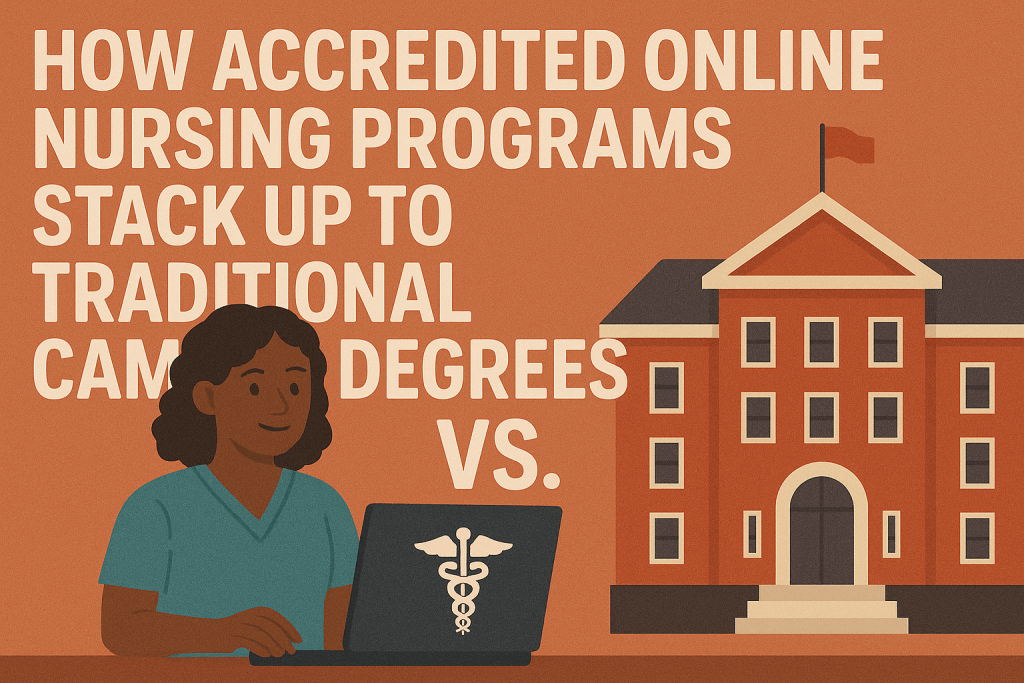Accreditation: The Foundation of Quality
When considering whether to pursue a degree online or in person, accreditation is the first and most important factor. Both traditional and online nursing programs must meet rigorous standards set by accrediting bodies like the Commission on Collegiate Nursing Education (CCNE) or the Accreditation Commission for Education in Nursing (ACEN). Accreditation ensures that the curriculum, faculty qualifications, and clinical training all meet industry expectations and licensing requirements. In this way, an accredited online degree carries the same professional weight as a campus-based one.

Curriculum and Flexibility
Curriculum structure in both models is also comparable. Core nursing classes—ranging from pharmacology to patient care ethics—are typically identical in content. The primary difference lies in delivery. Online programs often offer asynchronous coursework, allowing students to complete assignments on their own schedules. This flexibility is especially beneficial for working nurses, parents, or those living in rural areas who cannot easily commute to a campus.
Clinical Experience and Real-World Readiness
Clinical requirements are another area of concern for prospective students. While traditional programs often arrange clinical placements through affiliated hospitals near the school, online students are usually responsible for coordinating placements in their local communities. Reputable online programs provide support for this process and ensure that clinical hours meet state and national licensing standards. In the end, both types of students gain hands-on experience in real-world healthcare settings.
Technology Enhancing the Learning Experience
Technology has also made it easier than ever for online students to engage meaningfully with peers and instructors. Virtual simulations, discussion boards, video conferencing, and interactive case studies all help bridge the gap between classroom learning and clinical readiness. Many students find that they receive just as much personal attention in an online program—sometimes even more—thanks to smaller virtual class sizes and flexible communication methods.
Networking and Professional Connections
One area where traditional programs may still have an edge is in networking and campus culture. Face-to-face interactions with classmates and faculty can foster lasting professional relationships. That said, many online programs host live events, clinical intensives, and alumni networks to help students build similar connections. In today’s increasingly digital world, virtual networking has become an effective supplement to in-person opportunities.
Employer Perceptions Are Shifting
It’s important to note that employers are becoming more open to and even enthusiastic about hiring graduates from accredited nursing online programs. What matters most is that the program is recognized by accrediting bodies and that the graduate is licensed and clinically competent. As the healthcare industry evolves, adaptability and digital literacy—skills that online learners naturally develop—are becoming just as valuable as clinical experience.
Final Thoughts
In conclusion, accredited online nursing degrees are not a shortcut or second-tier alternative. They offer the same academic rigor and career outcomes as traditional campus programs, with added flexibility for modern learners. For motivated, disciplined students, an online path to nursing can be just as rewarding and respected as any on-campus journey.

